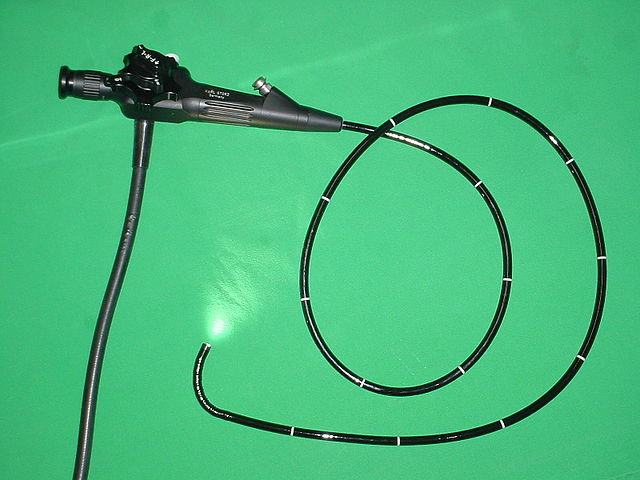Top Qs
Timeline
Chat
Perspective
Autoimmune polyendocrine syndrome type 1
Autoimmune condition causing dysfunction of endocrine glands From Wikipedia, the free encyclopedia
Remove ads
Autoimmune polyendocrine syndrome type 1 (APS-1), is a subtype of autoimmune polyendocrine syndrome (autoimmune polyglandular syndrome). It causes the dysfunction of multiple endocrine glands due to autoimmunity. It is a genetic disorder, inherited in autosomal recessive fashion due to a defect in the AIRE gene (autoimmune regulator), which is located on chromosome 21 and normally confers immune tolerance.[1][2][3]
Remove ads
Signs and symptoms
APS-1 tends to cause severe symptoms.[4] These are present from early in life, usually around 3.5 years of age.[4] Common symptoms of APS-1 include:
- Chronic mucocutaneous candidiasis.[4]
- Hypoparathyroidism.[4]
- Addison's disease.[4]
- Ectodermal dystrophy (skin, dental enamel, and nails).
APS-1 may also cause:
Remove ads
Cause

APS-1 is caused by a mutation in the AIRE gene, encoding a protein called autoimmune regulator. This is found on the 21q22.3 chromosome location, hence chromosome 21.[1][2][6] The AIRE gene may be affected by any of at least 186 mutations.[7] APS-1 may be inherited in an autosomal recessive manner.[8]
Different mutations are more common in different geographic regions. R139X is a common mutation in Sardinia.[4] R257* is a common mutation in Finland.[5] Both of these mutations are nonsense mutations: the asterisk and the "X" both indicate a stop codon.[7] A 13-base-pair deletion in the AIRE gene, c.967-979del13bp, has been identified in APS-1 patients in Norway, Britain[8] and North America.[9][10]
Remove ads
Pathophysiology
APS-1 is due to problems with immune tolerance.[11] APS-1 causes considerable reactions with both interferon omega and interferon alpha.[4][12] There may also be a reaction against interleukin 22.[4] This leads to damage to endocrine organs.[4] Common problems include hypercalcaemia and nephrocalcinosis (due to a lack of calcitonin from the thyroid), and pituitary problems (such as growth hormone deficiency).[4] Antibodies against NLRP5 may lead to hypoparathyroidism.[citation needed]
Diagnosis

Diagnosis of APS-1 is based on a number of tests, including endoscopy, a CT scan,[12] a biopsy (with histological testing),[12] and serum endocrine autoantibody screening.
Treatment
Autoimmune polyendocrine syndrome type 1 treatment is based on the symptoms that are presented by the affected individual. Treatments may involve hormone therapy,[13] systemic antifungal treatments,[4][13] and immunosuppression.[13] The JAK-STAT inhibitor ruxolitinib is being investigated as a treatment specifically for its normalizing effect on interferon-gamma.[14]
History
APS-1 may also be known as autoimmunity endocrinopathy candidiasis ectodermal dystrophy / dysplasia (APECED),[citation needed] autoimmune polyglandular syndrome type 1,[citation needed] Whitaker syndrome,[12] or candidiasis-hypoparathyroidism-Addison's disease syndrome.[15]
See also
References
Further reading
External links
Wikiwand - on
Seamless Wikipedia browsing. On steroids.
Remove ads

